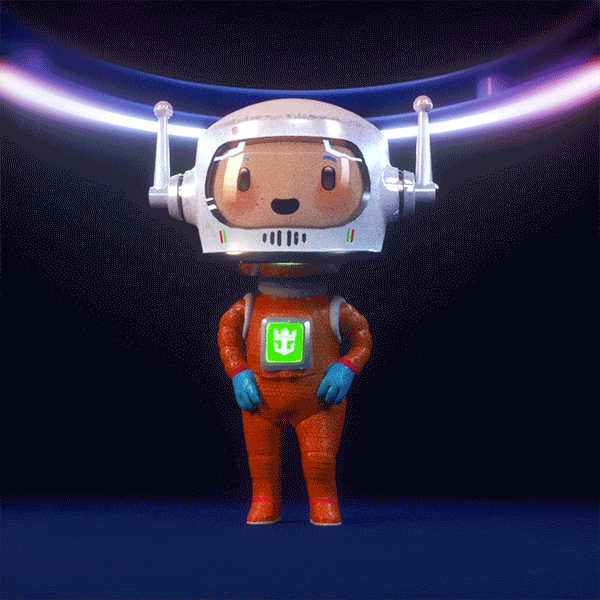
Humans in Interfaces
As soon as the infant can see, it recognizes faces, and we now know that this skill is hardwired in our brains. Those infants who a million years ago were unable to recognize a face smiled back less, were less likely to win the hearts of their parents, and less likely to prosper. These days, nearly every infant is quick to identify a human face, and to respond with a goony grin."
— Carl Sagan from "The Demon-Haunted World"
A choice of weapons
The impact of seeing a face is one of the strongest and most universal there is. Faces are the equivalent to the smell of something burning: it overrides everything else. Once a face is recognized, there's no way back not seeing it anymore. It probably was an evolutionary advantage to see the tiger's face as early as possible. The phenomenon of Apophenia – where people find faces in random data – stands behind many cultural effects in natural religions and the believes that lead to superstition and mysticism. As soon as we see a face we start reading and interpreting its meaning on a social and contextual level. In short: we match it with ourselves.

Imprinted in our cognition
There are many things in the outside world that we don't generally need to pay much attention to. Other patterns are so important that our brains have evolved specialized mechanisms for processing them as quickly and efficiently as possible. Social information – such as facial expressions – belongs in the latter category. Our brains seem to be pre-wired to recognize the shape of the human face – and anything that vaguely resembles it.
A face immediately triggers an emotion best described as familiarity. Like a language that we speak without effort. And even more interesting a smiling face produces a smile on the observer's face. Responsible for that are the so called mirror neurons that react on other social individuums and reproduce emotions, sensory and even movement feedback as a internal representation leading to empathy and compassion.
The processing of the patterns seem to be holistic, since the stimulus works down to a resolution of only 12 x 14 pixels worth of visual information. It works more like a coherent landscape, rather than perceiving one feature at a time. We quickly build holistic representations to extract useful second-order information. Holistic processing is a fast, early grouping process that first serves to distinguish faces from other competing objects. From this perspective, holistic processing is a quick initial response to the first-order information present in every face.
"As we have evolved, the brain has become capable of making complex social judgments on some very basic visual cues. […] All the social information is in the centre of the face, if the brain is distracted by imperfections, it processes less and so has a weaker social assessment of the person it is looking at."
— Dr. Arnaud Aubert, experimental psychologist, Université François-Rabelais, France

"We want our new website to be emotional!"
...is something we hear a lot. What this usually boils down to is the wish for screen-filling imagery, sometimes with the explicit desire to show "more personality" through images of people. This, of course, is the result of extensive research and writing about the value of human faces in interaction, now reaching the masses. And, it is a fine and understandable notion, which we support.
But, in day-to-day agency work this request is still somewhat hard to fulfil. Some common challenges are:
- No good existing images to use. They either need to be shot or stock.
- The shooting results in "stocky" looking images, not being "on-story" and missing the concept.
- There is a desire to show real people, i.e. for contact images, but they can't be identified within the organisation -> stock is used.
- If stock is the way to go for various reasons, it is very hard to find a coherent set supporting the story.
- A set of imagery is created for the first launch, but is not maintained and updated over the lifecycle
Maybe, and this is just an assumption, there is a tendency across agencies that go a safer route and go with images of objects or landscapes, because it is seemingly the more control- and sustainable route.
Clients need guidance from the agency to understand these unique challenges, resulting from the simple wish to "make it more emotional". During initial talks about content strategy and governance structures these talking points come in handy:
Images of people within a digital product are never to be used as embellishment
They should support the story you are telling in this specific area of the page. Users will connect to those faces and gestures and will read more meaning into a picture of a human, than in anything else.This 'contextualised imagery' is definitely something we can take to our advantage and talk about it from the start and over the course of the project
Going this way will result in added responsibility for the team supporting the product
Using real people from your organisation as visible faces within your digital outlet means you have to maintain, support and treat it, like you would the people themselves. Employees enter and leave, positions change, stories change. All this needs to be reflected within the product. We use the human face specifically because it has such a high value in communication. The own face has a high value for your employees as well.

With great power comes great responsibility
...towards your content. Images of people have an enormous power, they immediately tell a story. We need to make sure it is the story we want to tell. Used without careful consideration can contradict surrounding content or even devalue something important you convey through other media in your product. When we view images of people, we follow their gaze, we mirror their emotion, we associate or disassociate, we believe or question. This is powerful.
We find that intensive, early discussion about these topics helps greatly in creating good understanding by all parties and aligns our intentions.
State of the stock
Within the last year the stock image landscape changed somewhat with the rise of the free stock image sites. Many new collections popped up, usually with the same model of trading publicity for the photographer for free imagery. It has become a great resource and usually these sites provide a more naturalistic approach to stock photos, than traditional players such as Getty or iStockPhoto do. There has clearly been a demand for this style of pictures and the curated, free model as the many offers suggests.
But, the new offerings share something with the established. Emotion and storytelling is hard to classify and thus hard to precisely describe and find. Most free sites do not have any search or parametric filter to narrow down to one's needs. The top dogs are quite advanced in this, but since there is no clearly defined syntax for describing the emotions and meaning, it is hard to find a set of images that are truly consistent in their communication.
You can find a great collection of free stock image sites at The Stocks, courtesy of Panda
Does size matter?
As stated above, even faces as small as a couple of pixels trigger an emotional connection. Although larger most of the time, interfaces on laptops, tablets or phones still show people at a reduced size. This puts a layer of abstraction between the user and the interface. But, with the advent of larger interaction areas, like touchscreens - or walls, this could change. Now the interface can be at human scale. What if images or a virtual representation of a human meets the user eye to eye and thus truly becomes the human interface? Does this change the emotional relation further? Definitely an interesting field to explore. In the context of one of our latest projects, CASETURE, we started to explore this a little bit. Have a look at the case "Approacher"

